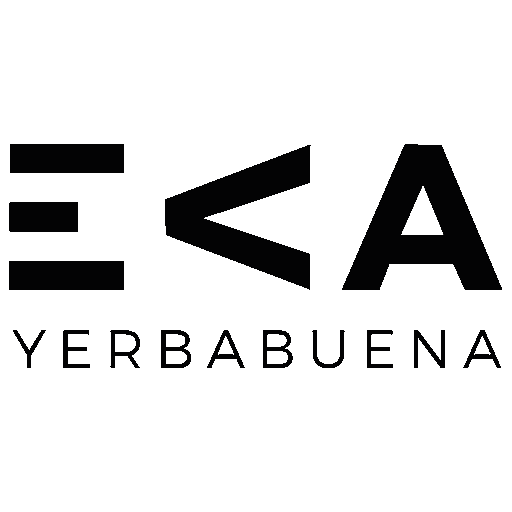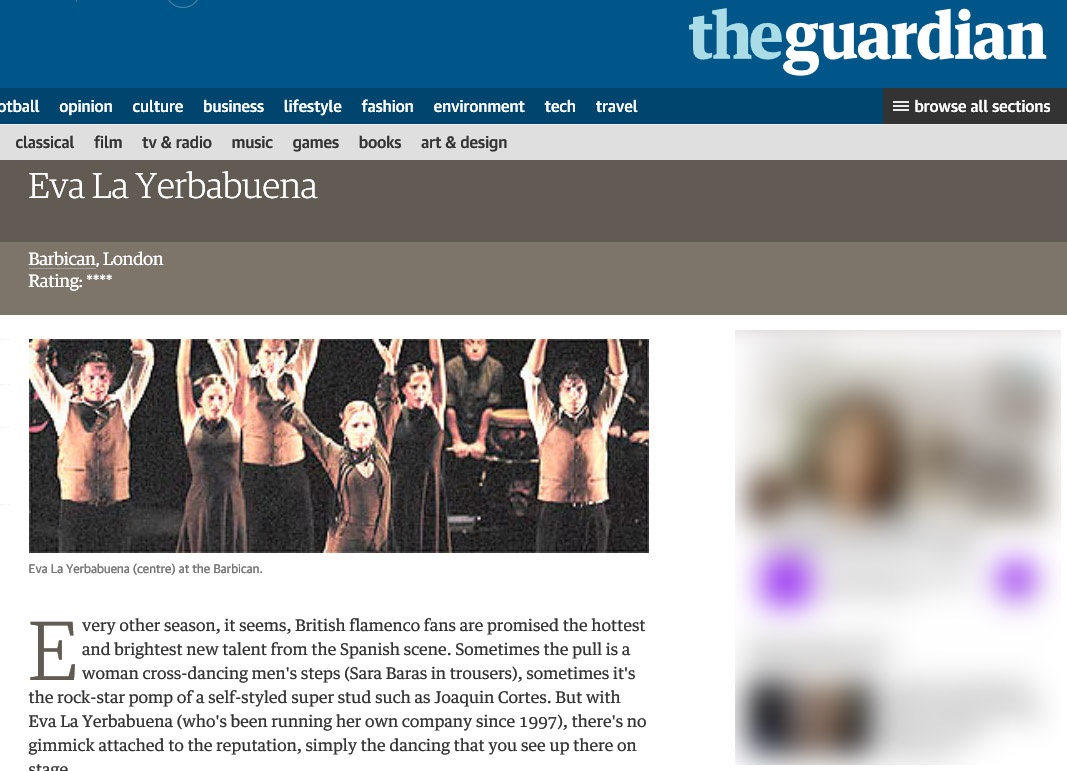Every other season, it seems, British flamenco fans are promised the hottest and brightest new talent from the Spanish scene. Sometimes the pull is a woman cross-dancing men’s steps (Sara Baras in trousers), sometimes it’s the rock-star pomp of a self-styled super stud such as Joaquin Cortes. But with Eva La Yerbabuena (who’s been running her own company since 1997), there’s no gimmick attached to the reputation, simply the dancing that you see up there on stage.
La Yerbabuena makes a feature of her own purity by presenting a show stripped to essentials. The costumes are plain – no carnations or castanets – and there’s only the subtlest thread of narrative from which to hang the dance and music. Her style of movement is focused strictly on the pure rhythms and lines of flamenco. She is, as far as it is possible to be in this dance form, a minimalist.
Cada temporada parece que los fanáticos británicos flamenco se prometen el talento más caliente y más brillante nuevo de la escena española. A veces el tirón es una mujer de pasos de baile Cruz masculino (Sara Baras en pantalones), a veces es la pompa de la estrella de rock de un montante super Self-styled como Joaquin Cortes. Pero con Eva La Yerbabuena (que lleva su propia empresa desde 1997), no hay ningún truco a la reputación, simplemente el baile que ver allí en el escenario.
La Yerbabuena hace una característica de su propia pureza presentando un espectáculo despojado a lo esencial. Los trajes son claras – no hay claveles o castañuelas – hay sólo el hilo más sutil de la narrativa de la que colgar la danza y la música. Su estilo del movimiento se centra estrictamente en las líneas de flamenco y ritmos puros. Ella es, por lo que es posible que en esta forma de danza, un minimalista.
In the choreography for her company, La Yerbabuena foregrounds the clean percussive logic of the five dancers’ footwork and disciplines the opulent curves of their arms and torsos into pristine patterns. We see a dance language redolent of Andalusian history and geography but abstracted into universal form. And though she performs with all the ferocity of a gypsy diva in her own solos, her personality doesn’t come across as a torrent of temperament. It’s concentrated inward into the passion of the technique.
What is instantly arresting about La Yerbabuena’s dancing is the eloquence of her arms – the hot languor with which she undulates a long spiral down their length, and the razor-sharp authority with which she arrests them into a series of staccato angles. The drama of her footwork evolves more slowly, but by the end her minutely flickering steps are amplified and deepened into a bass line of passionate, stamping thunder.
Considering the heat and temperament of flamenco, it was odd how often I was moved to imagine La Yerbabuena dancing opposite the preternaturally dapper Fred Astaire. But, like Astaire, she links each move on a musical pulse so exact that it makes the rhythms of her dancing seem preordained. Like him, she seems to have learned how to do all this in another life. And, like him, she is blessed with some great collaborators. Her husband, guitarist Paco Jarana, leads a band of singers and musicians who rival La Yerbabuena in their balance of passion and rectitude, while her five dancers are intelligent and stylish – performers whom you would like to see more of, if it didn’t mean seeing less of their star.


